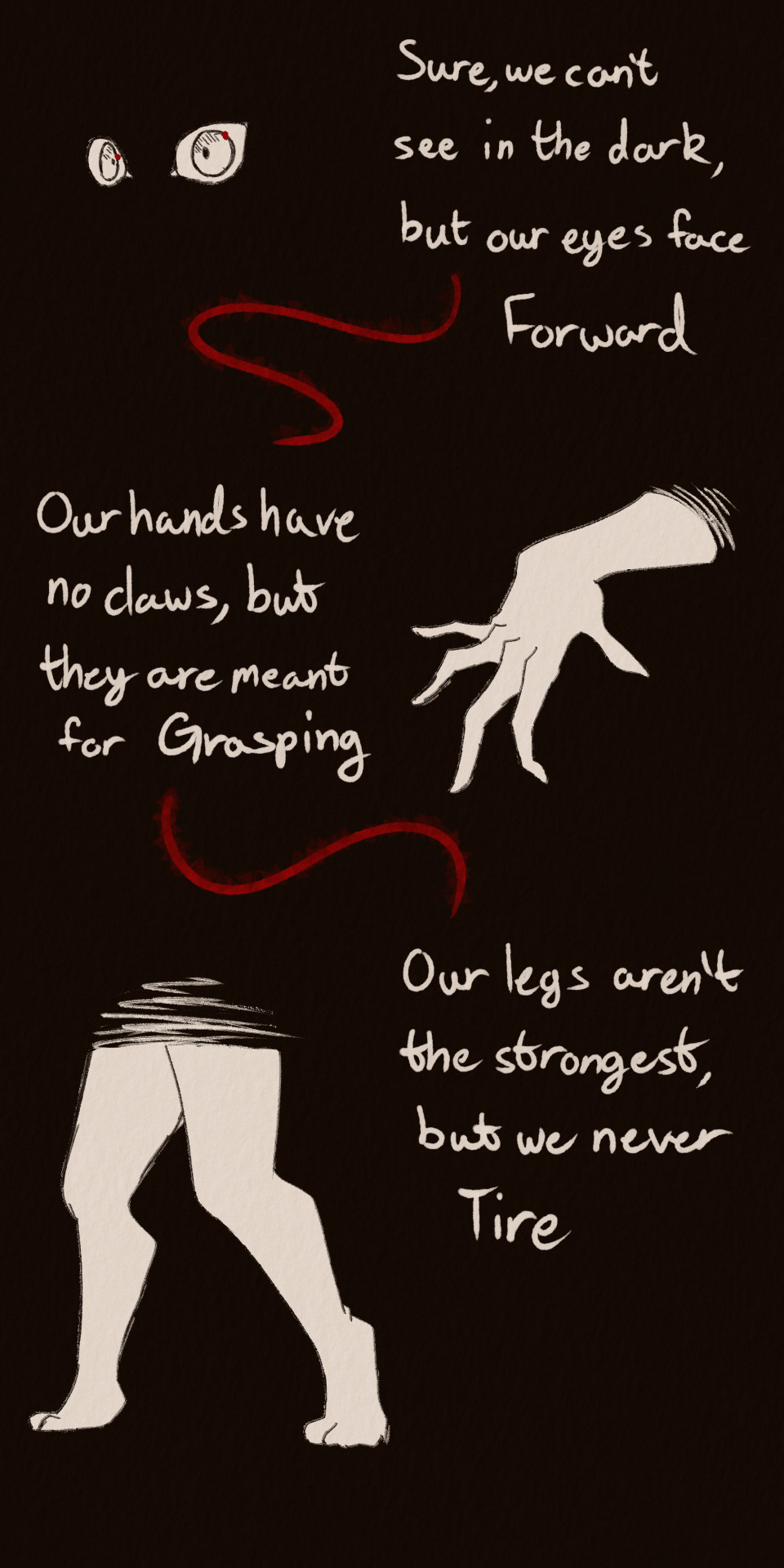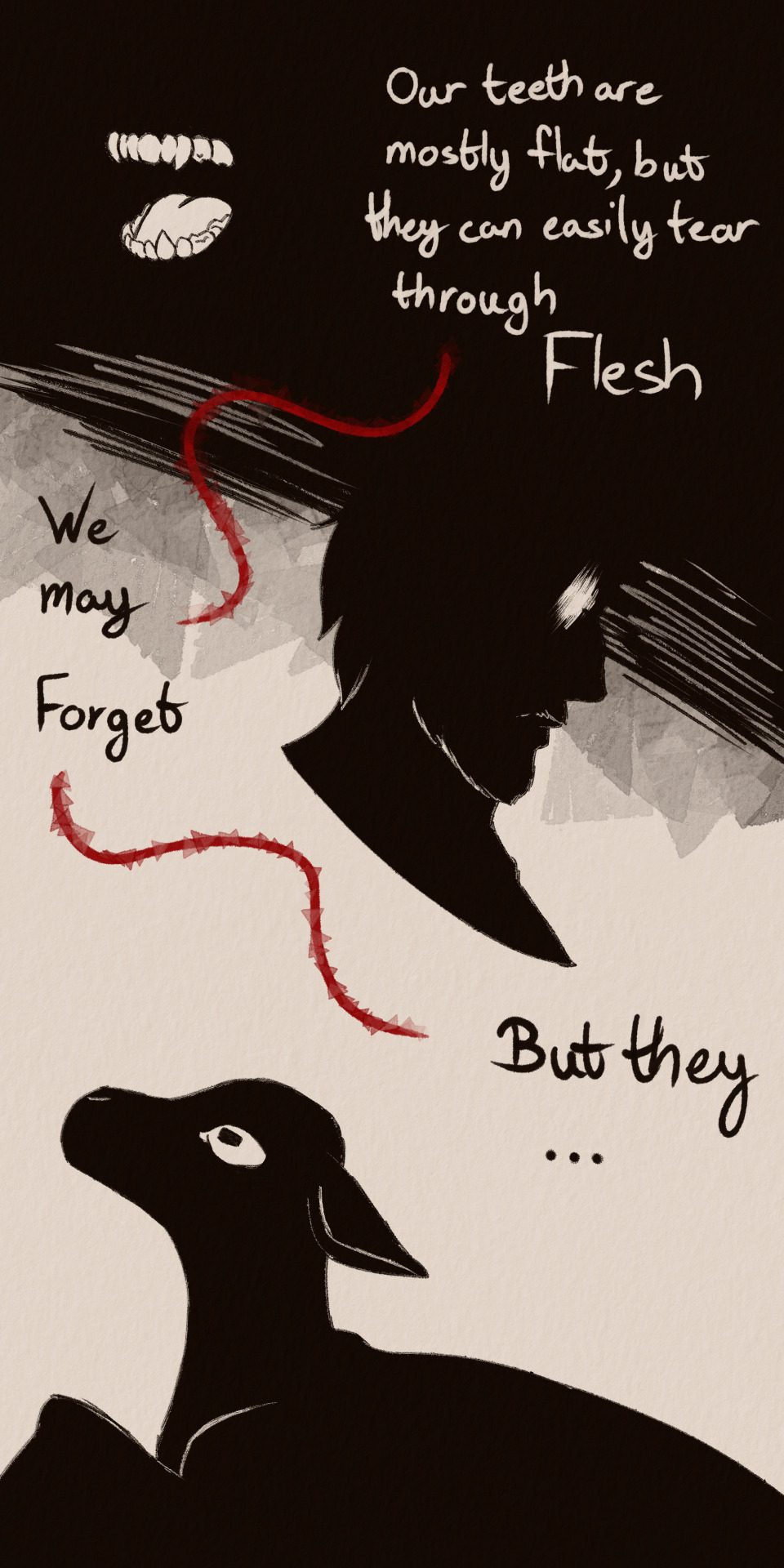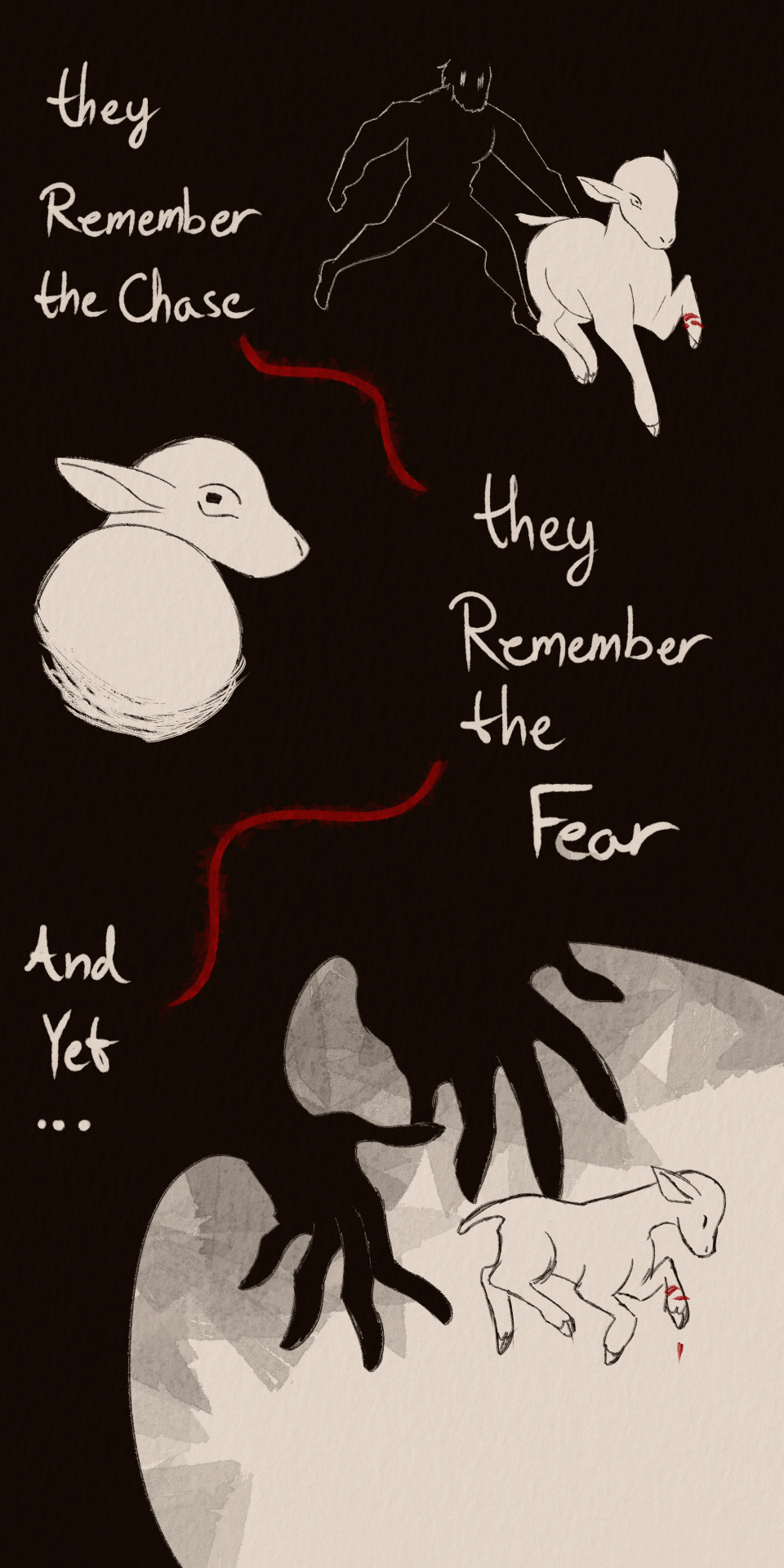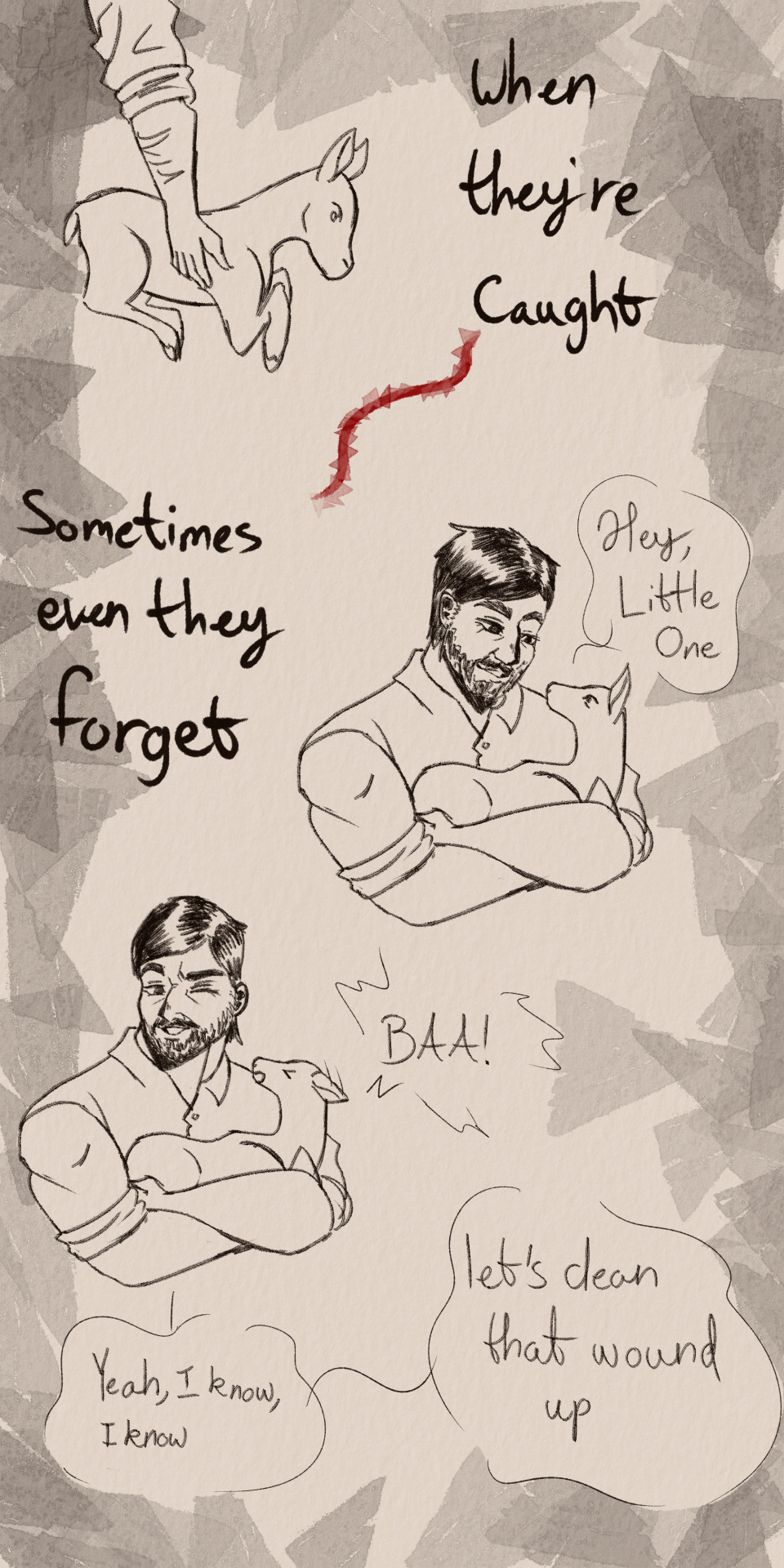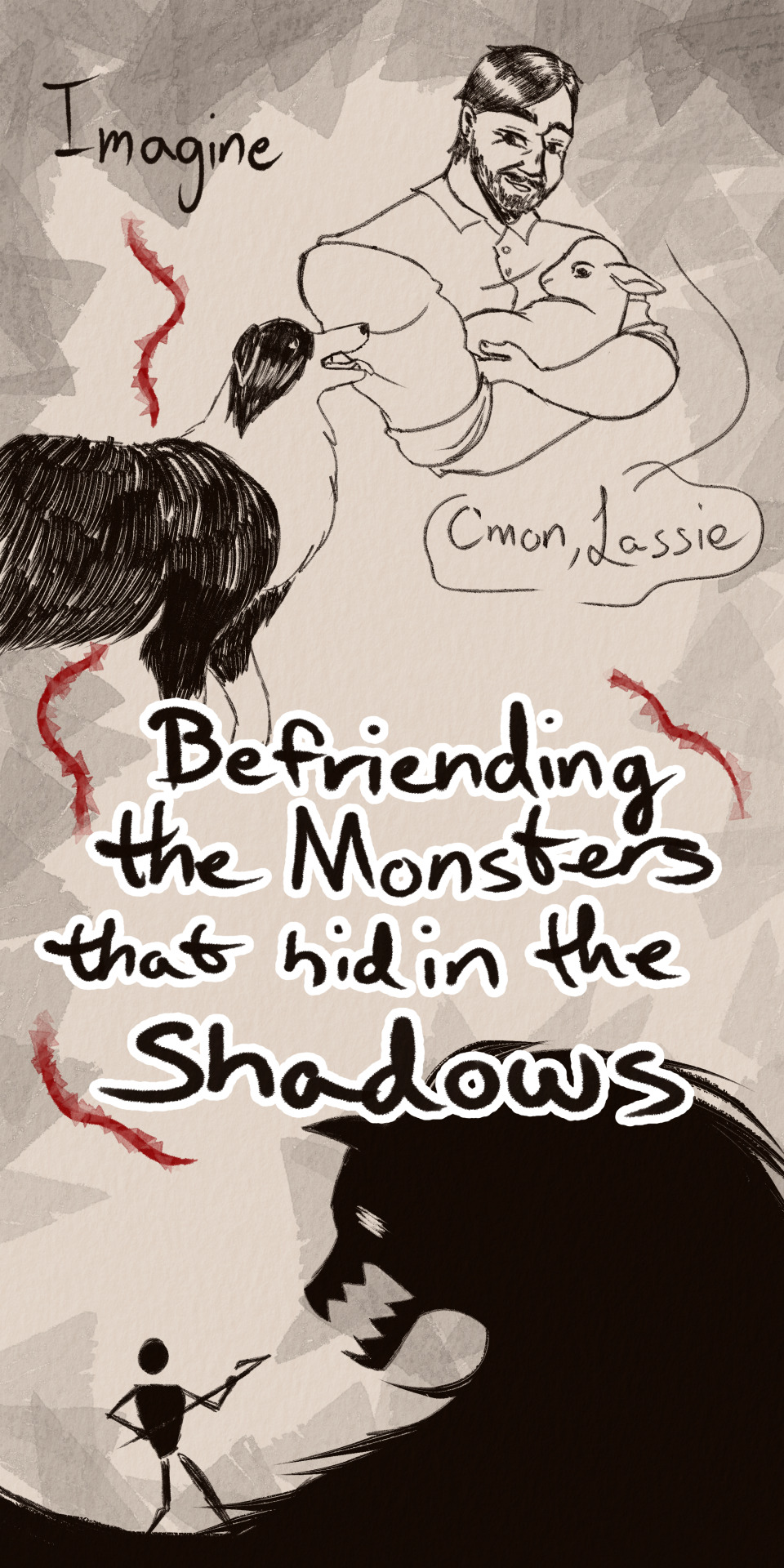call me cami. they/them. im 24, generally pretty queer, and an atheistic satanist. exclusionists & traditionalists fuck off. the only rads found here should be radical compassion and cosmic background radiation
Don't wanna be here? Send us removal request.
Text
the insane experience of missing a fictional character . like you can always go back and reread the book , replay the game , rewatch the show or movie , you can always go back & see them , but you can never experience them & their story for the first time again . its absurd to miss them because they'll always be there , but you'll miss when there were still new things for them to say .
for a small time they were real & growing and changing and you hung onto every new word, but now all they can do is repeat the same story forever&ever & they're not real anymore because you know everything they're going to do. & you miss them. its fucked man...
37K notes
·
View notes
Text

double post bc i wanna show off my oc and why not
8 notes
·
View notes
Text

"Breach of Dawn"
First full painting of the new year, after a very long week. 💔
Prints of Lugia and Ho-oh available in my store. ✨️💛✨️
32K notes
·
View notes
Text
People said that Tumblr isn't a great place to post original art that isn't fanart, but I'm doing it anyway because I haven't got the motivation to draw anything else
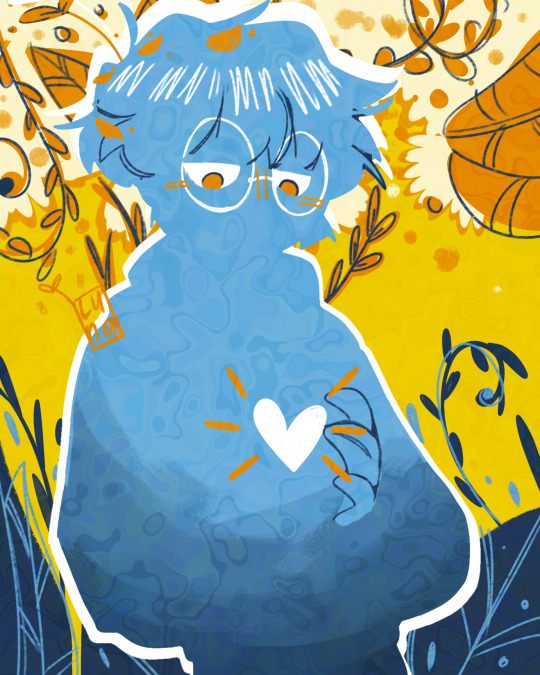
Happy pride month lads! 🧡💛🤍💙
from an aroace potato :)
94K notes
·
View notes
Text

Inej Ghafa, my bbg💜🐦⬛
Please do not repost on other platforms without my consent!
1K notes
·
View notes
Text

NOELLES CD FROM UNDER HER BED!!
my rendition! (Holy self projection)


ΑND SPRITE VERSIONS I MADE
Malice Mizer font was used btw
3K notes
·
View notes
Text

✈️♻️ An all-electric plane made its historic landing at JFK airport in New York! The 45-minute flight used only $8 worth of electricity!
829 notes
·
View notes
Text
"A German bio-tech company has developed a naturally-occurring enzyme discovered in a cemetery into a near-market ready solution for recycling plastic without any loss of quality.
In 2022, GNN reported on a paper published by Leipzig-based scientists who first identified the enzyme. At the time, the enzyme was subject to a small side-by-side test, and caused the polyethylene terephthalate (PET) plastic to decompose by a whopping 90%.

Pictured: Before and After: A container of PET after 24 hours of contact with the enzyme leaves only dye
Fast forward to the spring of 2025 and those same scientists have perfected the capabilities of that enzyme, called PHL7, and have founded ESTER Biotech to bring those capabilities to market.
Their initial plan to be finished next year is a bathtub-sized pilot project reactor. If successful, their 2030 plan will be four 350 cubic-meter reactors capable of processing 45,000 metric tons of PET plastic every year.
PHL7 and ESTER Biotech boast several advantages over chemical and thermal recycling methods. For starters, once the polymers of PET are broken by the enzyme into monomers, or single component parts, they have suffered no degradation of their material characteristics unlike some recycled plastic which is weaker or less stable.
Additionally, PHL7 is exceptionally stable from 32 to 203 degrees Fahrenheit (0-95°C), and per kilogram of plastic, a dose of only 0.02% to 0.06% of the enzyme is required—substantially less than existing alternatives. Their new version of the enzyme also recycles the plastic several hours faster.
“Our technology makes it possible to bring material flows that are currently burned back to the beginning of the cycle at the molecular level,” says Christian Sonnendecker, lead author on the paper of the enzyme’s discovery, and co-founder of ESTER Biotech at the University of Leipzig. “And with high energy efficiency and scalability.”
“We are only at the beginning. But we are convinced that when science, entrepreneurial spirit and social responsibility come together, a cemetery enzyme can become a beacon of hope for a better future.”
RECYCLING BREAKTHROUGHS:
Scientists in Japan Develop Non-Toxic Plastic That Dissolves in Seawater Within Hours
Cornell Researchers Create First-of-its-Kind Durable and Recyclable Plastic
New Process ‘Vaporizes’ Plastic Bags and Bottles to Help Make Recycled Materials
Revolutionary New ‘Living Plastic’ That Could Slash Damage to the Environment Developed by California Researchers
ESTER Biotech’s enzyme is able to separate certain multilayer composites which are normally thought of as unrecyclable. In addition to the infrastructure of the pilot project, ESTER is currently working with two medium-sized partners to build a cost-efficient supply chain with an aim to reduce the enzyme price to between 100 and 200 euros per kilogram.
Though no currently-commercialized recycling method can compete with the cost of virgin plastic, a price between 100 and 200 euros will put it in line with existing competitors.
Fortunately for anyone in the space, the EU is not afraid to use heavy-handed regulation to guarantee plastic recycling rates. By 2040, under existing EU legislation, 65% of plastic production will be mandated to come from recycled sources. ESTER believes that with its potential to offer a higher quality “recyclate,” the incentive to pursue and expand enzymatic methods will increase."
-via Good News Network, June 13, 2025
3K notes
·
View notes
Text
"A cure for HIV could be a step closer after researchers found a new way to force the virus out of hiding inside human cells.
The virus’s ability to conceal itself inside certain white blood cells has been one of the main challenges for scientists looking for a cure. It means there is a reservoir of the HIV in the body, capable of reactivation, that neither the immune system nor drugs can tackle.
Now researchers from the Peter Doherty Institute for Infection and Immunity in Melbourne, have demonstrated a way to make the virus visible, paving the way to fully clear it from the body.
It is based on mRNA technology, which came to prominence during the Covid-19 pandemic when it was used in vaccines made by Moderna and Pfizer/BioNTech.
In a paper published in Nature Communications, the researchers have shown for the first time that mRNA can be delivered into the cells where HIV is hiding, by encasing it in a tiny, specially formulated fat bubble. The mRNA then instructs the cells to reveal the virus.
Globally, there are almost 40 million people living with HIV, who must take medication for the rest of their lives in order to suppress the virus and ensure they do not develop symptoms or transmit it. For many it remains deadly, with UNAids figures suggesting one person died of HIV every minute in 2023.
It was “previously thought impossible” to deliver mRNA to the type of white blood cell that is home to HIV, said Dr Paula Cevaal, research fellow at the Doherty Institute and co-first author of the study, because those cells did not take up the fat bubbles, or lipid nanoparticles (LNPs), used to carry it.
The team have developed a new type of LNP that those cells will accept, known as LNP X. She said: “Our hope is that this new nanoparticle design could be a new pathway to an HIV cure.”
When a colleague first presented test results at the lab’s weekly meeting, Cevaal said, they seemed too good to be true.
“We sent her back into the lab to repeat it, and she came back the next week with results that were equally good. So we had to believe it. And of course, since then, we’ve repeated it many, many, many more times.
“We were overwhelmed by how [much of a] night and day difference it was – from not working before, and then all of a sudden it was working. And all of us were just sitting gasping like, ‘wow’.”
Further research will be needed to determine whether revealing the virus is enough to allow the body’s immune system to deal with it, or whether the technology will need to be combined with other therapies to eliminate HIV from the body.
The study is laboratory based and was carried out in cells donated by HIV patients. The path to using the technology as part of a cure for patients is long, and would require successful tests in animals followed by safety trials in humans, likely to take years, before efficacy trials could even begin.
“In the field of biomedicine, many things eventually don’t make it into the clinic – that is the unfortunate truth; I don’t want to paint a prettier picture than what is the reality,” stressed Cevaal. “But in terms of specifically the field of HIV cure, we have never seen anything close to as good as what we are seeing, in terms of how well we are able to reveal this virus.
“So from that point of view, we’re very hopeful that we are also able to see this type of response in an animal, and that we could eventually do this in humans.”
Dr Michael Roche of the University of Melbourne and co-senior author of the research, said the discovery could have broader implications beyond HIV, with the relevant white blood cells also involved in other diseases including cancers.
Dr Jonathan Stoye, a retrovirologist and emeritus scientist at the Francis Crick Institute, who was not involved in the study, said the approach taken by the Melbourne team appeared be a major advance on existing strategies to force the virus out of hiding, but further studies would be needed to determine how best to kill it after that.
He added: “Ultimately, one big unknown remains. Do you need to eliminate the entire reservoir for success or just the major part? If just 10% of the latent reservoir survives will that be sufficient to seed new infection? Only time will tell.
“However, that does not detract from the significance of the current study, which represents a major potential advance in delivery of mRNA for therapeutic purposes to blood cells.”"
-via The Guardian, June 5, 2025
4K notes
·
View notes
Text
"The average pediatric wheelchair can cost thousands of dollars. And when children grow and their needs evolve — or a wheelchair gets damaged — those costs multiply.
So, the team at MakeGood NOLA, a New Orleans-based adaptive design lab, has made something that can transform the world for disabled children.
“Introducing the world’s first fully 3D-printed wheelchair,” MakeGood founder and president Noam Platt started a recent social media video.
He wheels a small, almost toy-like lime-green wheelchair into the frame, complete with a matching harness, suitable for children ages 2 to 8.
“Everything from the body, to the wheels, to the tires, the seat, and even the straps, all were 3D printed on a regular Bambu Labs A1 machine,” Platt continued.
This means the design is fully compatible with a regular 3D printer anyone can have in their home.
“We designed this to be modular and easy to make,” Platt continued. “Really, anyone with a 3D printer and some filament can download the files and print it.” [Note: You can also use 3D printers for free or a small cost at some public libraries and maker spaces, opening up accessibility even further.]
Once the prototype is completely finished, it will be available as a fair-use download that anyone can use for free.

Pictured: The new 3D-printed chair by MakeGood. Photo courtesy of MakeGood NOLA
Platt said that because it has a modular design, the wheelchair can be put together without any tools or glue. And if any part of it breaks or is damaged, users can simply re-print the single piece they need.
“As a wheelchair user I love everything about this,” TikTok user @thisisharlie commented on Platt’s video debuting the wheelchair.
“Mine costs more than my car, I can’t imagine having to buy a new one every year or two as they outgrow it,” @thisisharlie continued. “You’re going to change the world.”
For Platt, that’s always been the plan.
When he created MakeGood in 2021, the nonprofit design lab was thinking of the more than 1 billion people around the globe who live with disabilities.
“Since traditional design often overlooks diverse bodies and minds, it is crucial to reshape the built environment,” MakeGood shares on its website. “The challenges our communities face — both physical and social — are solvable.”
MakeGood works with individuals to co-create their adaptive design solutions, centering the “Need Knower,” the disabled person or their primary caregivers, throughout the entire process.
Since the founding of MakeGood, 1,600 individualized adaptive devices have been delivered to families for free. Platt’s team found a niche with this wheelchair, which they call the Toddler Mobility Trainer, or TMT.
On its website, the organization says the wheelchairs were “designed with therapists from all over the world” and offer “unmatched mobility and independence to young kids.”
Children and parents agree.
“It’s an A+,” one parent said of an earlier prototype of the TMT in a report by CBS News. “It’s helped [my son] become more mobile and be able to adapt into the other things that he’s going to be offered. It’s helped his development.”
At the start of the design process, Platt reached out to area hospitals to see if he could fill a need.
“Part of it is empowering clinicians that we can go beyond what is commercially available,” Platt told CBS News. “We can really create almost anything.”
Now in the final stages of tweaking the TMT design to be ready for release, Platt is eager to get the wheelchair rolled out and into the homes of the children who need them most.

Pictured: A rendering of the 3D printed design, which will soon be available for download. Photo courtesy of MakeGood NOLA
“We think this sort of 3D printing and design is going to be huge for accessibility, and for wheelchairs specifically,” Platt said in his social media video.
In the meantime, people can request a free chair from MakeGood.
“We have a growing list of people who’ve requested these, and once we finish the design, we’ll start filling those requests with custom-printed chairs, including things that you might need for your particular chair,” Platt said in a follow-up video.
Because the chairs are easily 3D printed, they can come in any color and can be modified to include other accommodations, like a section to hold a breathing device or other aid. With years of customization and design experience under his belt, this new innovation is simply an extension of Platt’s dedication to inclusive design.
In 2023, Platt told New Mobility: “I feel like every time I deliver one of these [assistive] devices, I get a hopeful feeling that the world has been changed a little bit for the better for the next generation.”"
-via GoodGoodGood, May 8, 2025
5K notes
·
View notes
Text

letter from a mother of a gay man. sent to ONE magazine, 1958.
--
This post was flagged as adult content and the original poster was deactivated so I'm bringing it back.
115K notes
·
View notes
Text

has this been done before. it's been plaguing me in my dreams so i had to make it real.
4K notes
·
View notes



